Search Results
Fine Jewelry University Articles matching: “crystal”
Showing only FJU Article results. Click here to show all results.
Fine Jewelry University (Show All FJU Articles)
-
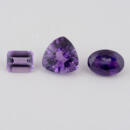
Gem in the Spotlight: Amethyst
… way to pay tribute to the goddess Diana. In order to protect Amethyst, Diana turned her into a statue made of pure, crystalline quartz. Dionysus, upon seeing the stunning statue, wept tears of wine in remorse for his actions. These tears … a deep, rich purple color. Amethyst also naturally occurs as geodes (rock that contains a hollow cavity lined with crystals) and the most famous of these is the largest ever found. This amazing stone named “The Empress of Uruguay” stands 10…
-
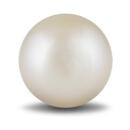
Gem in the Spotlight: Pearl
…. Luster A combination of the pearl’s exterior shine and glow from within. Created by light reflected from tiny crystals in the nacre. Mabe pearl Cultured pearls grown against an oyster’s shell rather than in an oyster’s tissue. The result … iridescent lining of an oyster’s shell. Often used as a nucleus for a man-made pearl Nacre Pronounced nay-ker. The crystalline substance secreted by an oyster to form a pearl. The microscopic crystals of nacre refract light to produce a …
-
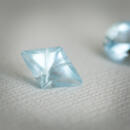
Gem in the Spotlight: Aquamarine
… ordered from Garrard in 1957. The Gemology of Aquamarine Like emerald, aquamarine is a member of the beryl family (along with morganite, heliodor, and others). Unlike emerald, it is frequently free of flaws and often occurs in large crystals. Aquamarine’s main pigment comes from iron. The color spectrum of aquamarine varies from very pale blue to a deep blue, the finest specimens being the deepest in color. Most aquamarine stones have a subtle green component, and in some…
-
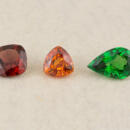
Gem in the Spotlight: Garnet
… lantern to navigate the Ark at night. The ancient world is full of praise for the carbuncle, the glowing red gemstone we now know as garnet. Early scientists named garnet from the Latin granatus, which means ‘seedlike’ because garnet crystals in rock reminded them of the shape and color of pomegranate seeds. Garnet is really a group of gemstones. The pyrope, almandine and spessartite are the red – brown to orange sometimes with a tint of violet varieties. The grossular, …
-
Caring for and Cleaning Your Jewelry
…. Diamonds are remarkable gems, hard enough to scratch everything, including themselves. Diamonds that rub together will scratch each other, so keep diamonds from touching one another when you wear or store them. Diamonds are crystals that grow with a cleavage plane. This means a sharp blow on a vulnerable spot can chip or break the stone. This does not mean that diamonds are not very durable. They are the most durable of all gems. In fact diamonds have been through a lot …
-
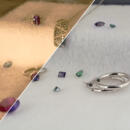
Gem in the Spotlight: Alexandrite
… bluish-green in daylight, fluorescent light, and some LED light. Under incandescent light, candle, and firelight, alexandrite appears purplish-red. This is because of how the trace element chromium interacts with alexandrite’s crystal structure. It absorbs most wavelengths of light very well, only transmitting green and red light. This means that depending on the light source the stone will reflect more of the accent colors of light. Since fluorescent light has a stronger…
-
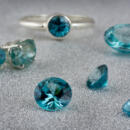
Gem in the Spotlight: Blue Zircon
Zircon may be last in the alphabet of gemstones, but it is first in sparkle. The crystal structure of zircon creates one of the liveliest displays found in any colored gem. In fact, before any of the manmade diamond simulates were made, the colorless version of zircon was used in jewelry to mimic diamond. Why? Natural …
-
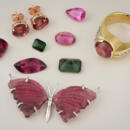
Gem in the Spotlight: Tourmaline
…from vanadium. Watermelon: This variant of tourmaline has a pink center and green edges that resembles a watermelon. Crystals of this type are often cut in slices to display this unique property. One of tourmaline’s most distinctive traits …energies, communication, and the ability to relax. In the 18 th century, a Dutch scientist claimed that a tourmaline crystal wrapped in silk and placed on the cheek of a feverish child would help them fall asleep. The gem was also highly …
-
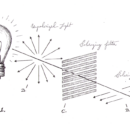
The Magic of Polarized Light
… and blue 3D movies, modern 3D uses two images along with a pair of glasses that have polarizing filters for lenses. This tricks your brain into thinking you are seeing a three-dimensional object using our perception of depth. Liquid crystal displays: Polarizing filters are part of an LCD screen’s core design. Without their ability to align light, LCD screens simply wouldn’t work. Radio/X-ray/Microwave: Radios, X-ray machines, and microwaves all use some form of a …